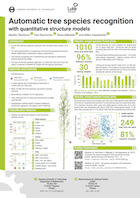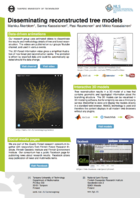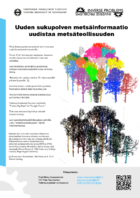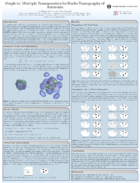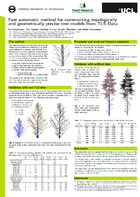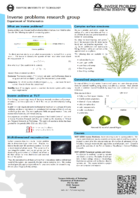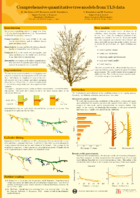Automatic tree species recognition
Title
Automatic tree species recognition with quantitative structure modelsConference
Royal Society Meeting: The terrestrial laser scanning revolution in forest ecologyAuthors
M. Åkerblom, P. Raumonen, R. Mäkipää and M. KaasalainenLayout
M. ÅkerblomA poster on automatic tree species recognition presented by M. Åkerblom at Chicheley Hall, Buckinghamshire on February 27th, 2017.
Description
We present a highly-accurate tree species recognition approach that uses only 3D spatial terrestrial laser scanning data (TLS) and is fully automatic. Individual trees are automatically separated from forest plot level point clouds and reconstructed as a cylindrical quantitative structure model (QSM). As a QSM contains the comprehensive geometric and topological structure of a tree, we have access to tree properties that are impossible to compute directly from point cloud data without reconstructing full QSMs. In comparison, previous methods require at least some level of manual interaction to separate individual trees, and they often rely on additional data sources, e.g., hyperspectral data.
We defined 15 classification features and tested their performance on over 1200 trees from 3 different species, and 5 different classification methods. We used trees from three single-species and two mixed-species forest plots, all located in Finland. The results show that accurate species classification based on TLS data and QSMs is possible when suitable training data are available. Our tests showed that as little as 30 training samples per species can produce good results. All of the classification methods performed well and maximum classification accuracy was over 95 % for all of the methods.
Reference
| [1] | Automatic tree species recognition with quantitative structure models In Remote Sensing of Environment, volume 191, 2017. |

